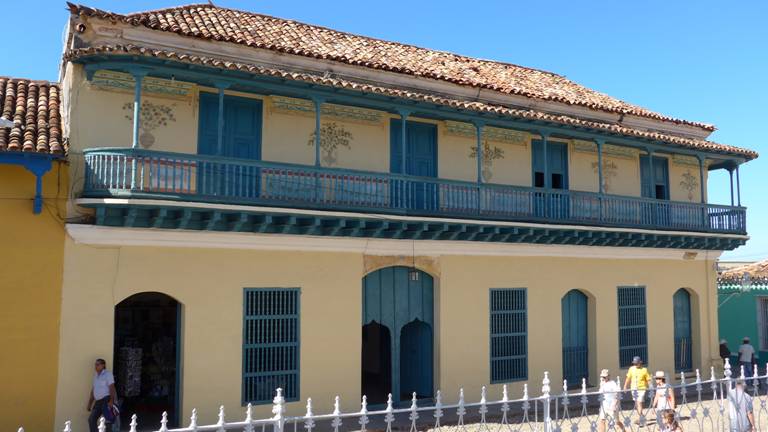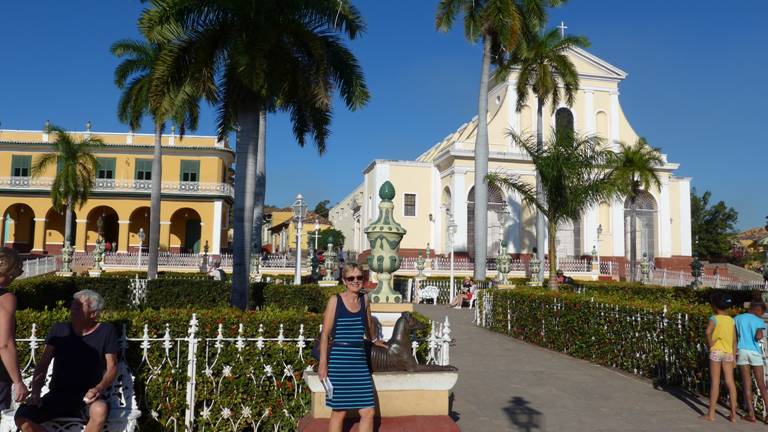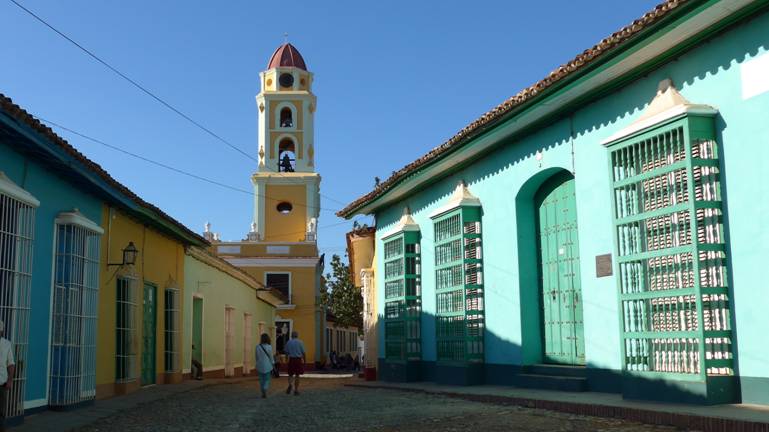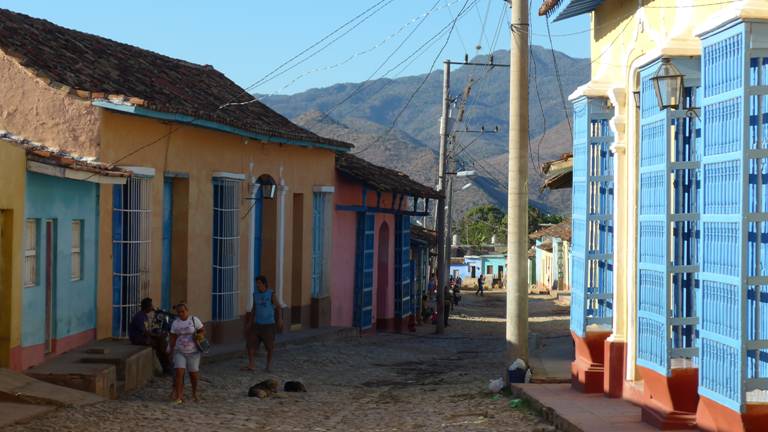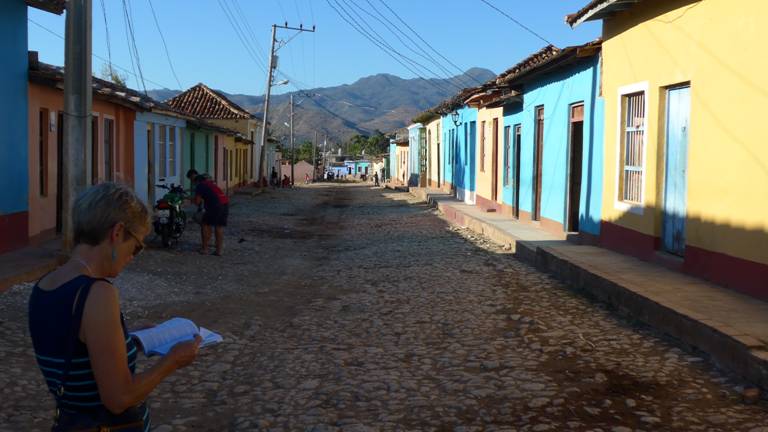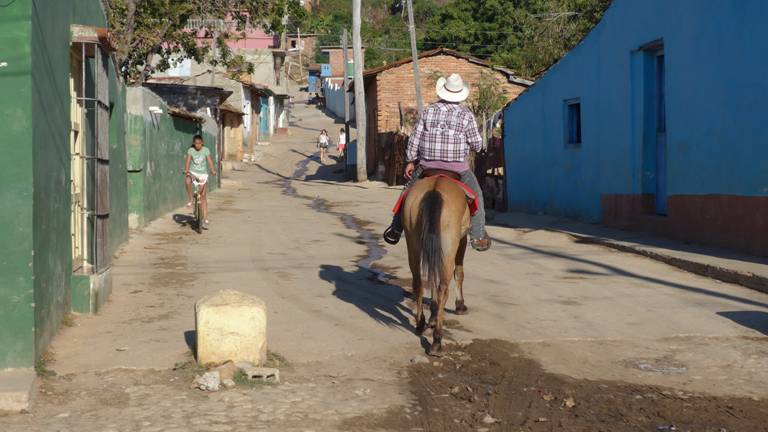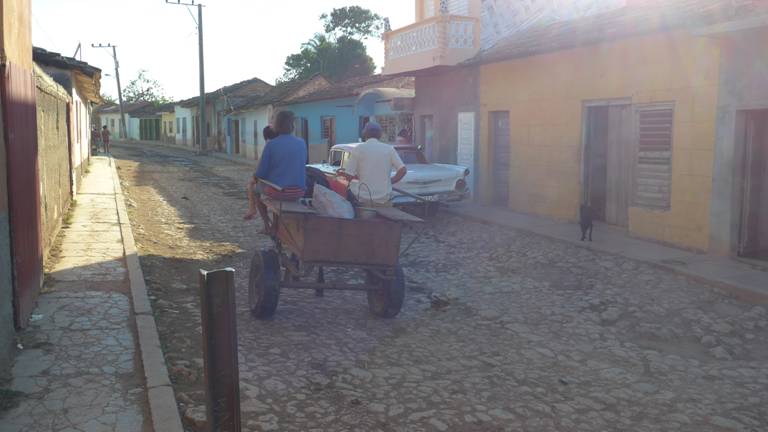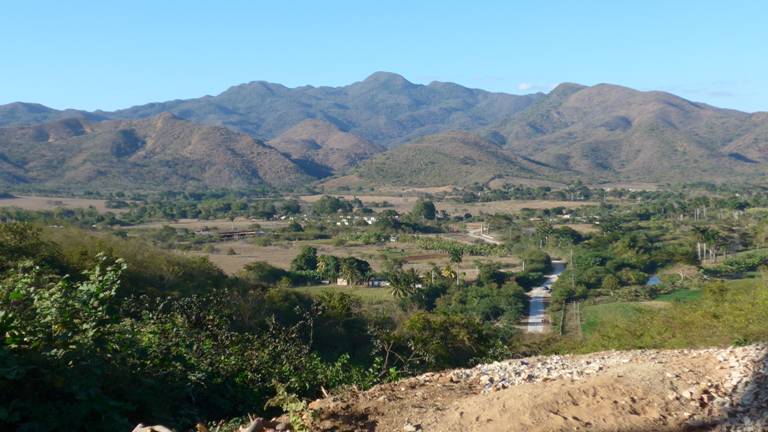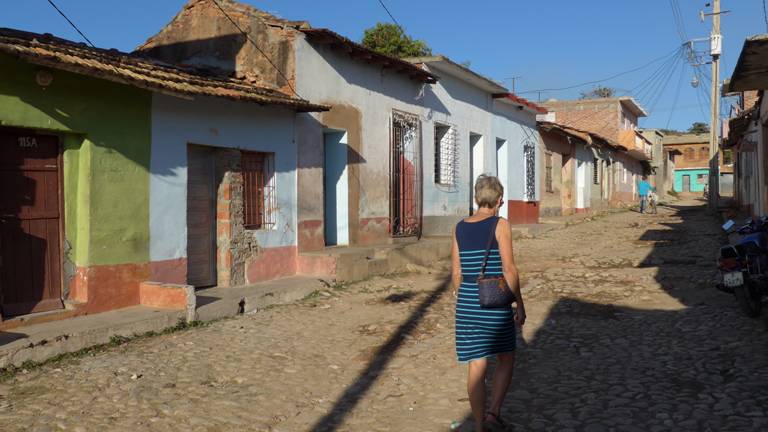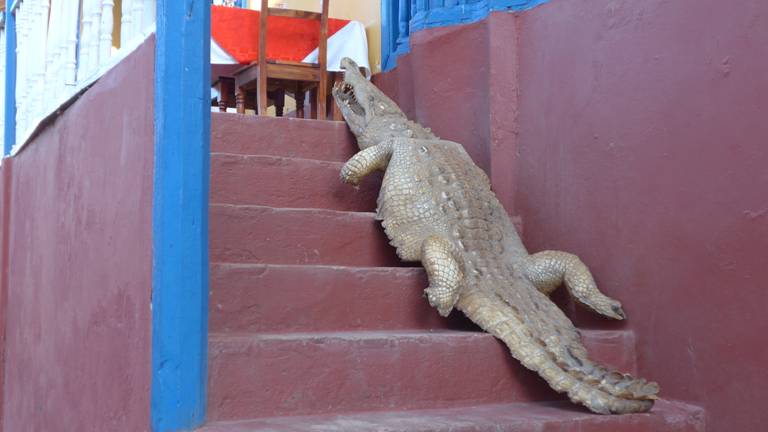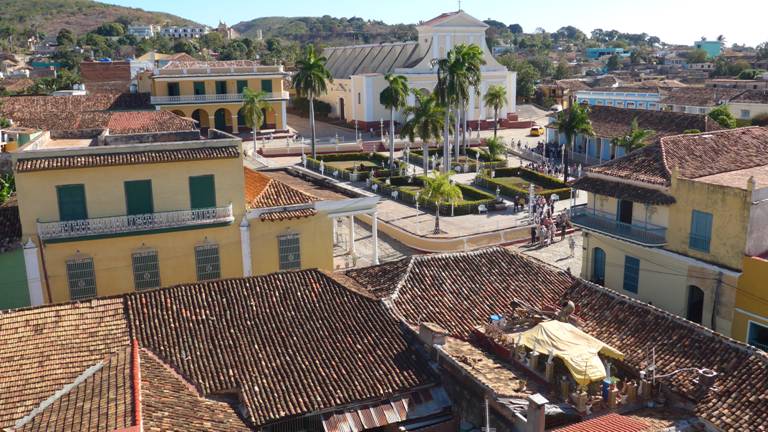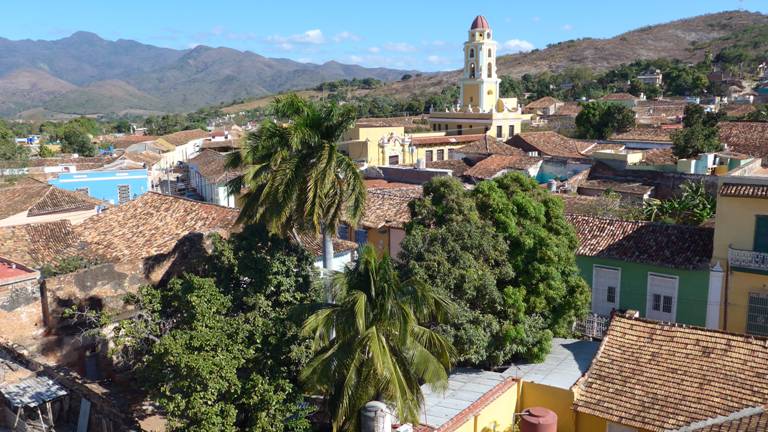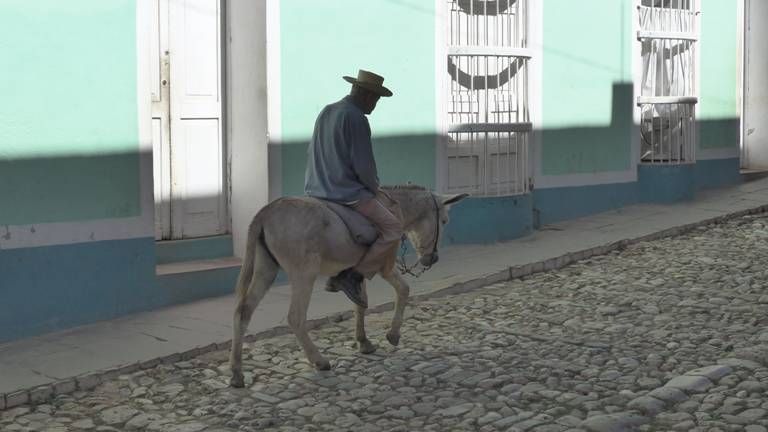Cuba Part III

|
Our other excursion was to the city of Trinidad on Cuba’s south coast and involved a 6½ hour bus ride. En route we saw more extensive agricultural activity in the broad central plain including stands of sugar cane, rice paddies and orchards of mango and citrus fruits. There were also huge areas of uncultivated land which seems a shame in such a fertile country. The main road/motorway had numerous signs forbidding horse and cart transport but it didn’t deter the few that we passed. On the more minor roads our driver often had to slow down for a cart and sometimes for a stray dog or loose horse.
The route to Trinidad detours through another Unesco World Heritage Site, the coastal city of Cienfuegos which is renowned for its French inspired architecture and position on the country’s most spectacular natural bay. The town seemed relatively prosperous with lots of purposeful activity on the streets as we drove by, but the outskirts quickly reverted to streets of bare earth and poor one storey dwellings.
Trinidad is described as a city that went to sleep around 1850 and never woke up. It is a perfectly preserved Spanish colonial settlement where the old streets are roughly cobbled and some beautiful mansions from the age of sugar fortunes are surrounded by simple, one storey, red-tiled houses. At times it really did feel as if the scene hadn’t changed in 200 years, apart from the power lines overhead. (The Cuban government has made sure that every home, however modest, has electricity.) We spent our time wandering the old town. We visited the elegant municipal museum with fantastic views from its tower towards the forest covered hills of the Sierra del Escambray, the sparkling Caribbean and the lovely rooftops of the town below. We browsed the items for sale in the outdoor arts and craft market and especially admired the crochet work which the local ladies produce to supplement the household income. Lindsay sampled the famous local rum cocktail - canchanchara (honey, lemon, rum and water) whilst David enjoyed a very special 12yr old rum from the southern city of Santiago de Cuba. We also had two very enjoyable evening meals and can confirm that Cuban cuisine is pretty good and incredible value. Our second evening was made even better by the music of 2 local “troubadours” who were very good singers and guitar players.
Our return to Havana after 2 nights in Trinidad involved a 3 hour delay as the bus we were supposed to take broke down before it reached us. We were relieved to make it back before nightfall in the end as we wanted to start making Goldcrest ready for an early departure for Mexico the following morning. We paid our dues at the marina where the delightful dockmaster asked why we were leaving with so much more to see still. We agreed it would be good to stay longer or return some day to see the rest of the country. Many Cubans are rightfully proud of their homeland.
We are still sitting in the marina in wild winds. The forecast we had seen hadn’t sounded any worse than several legs down the US coast, but we bowed to local knowledge and changed our plans. So now it looks as if we won’t get away for the passage to Islas Mujeres (just off the Mexican coast by Cancun), until Saturday at the earliest. We will have been in Cuba for nearly a month by then and our food cupboards are beginning to look like most shops here– pretty empty!
Lovely Trinidad building:
The main square:
Cobbled Trinidad street with the town’s typical tall windows:
Dusty back street and mountains beyond:
Another typical back street:
Bike and horse transport:
Ancient cart and car:
Looking towards the Sierra del Escambray:
Picking a way along the cobbles:
How to attract customers to your restaurant:
View of the main square from museum tower::
Attractive tiled rooftops:
No need to rush:
|
